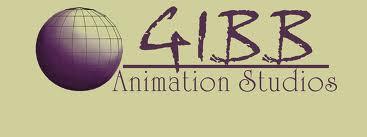
Gibb Animation Studios took the road less traveled and it has made all the difference; instead of following the traditional animation boutique route of producing 2D and 3D commercial animation, instead Gibb chose to do corporate animations within specific verticals. Jeremy Gibb simply found a niche and worked it.
Since 2003 Gibb Animation has focused on animation and stills within the corporate space, doing forensic animations, photo-realistic images, medical animation, architectural renderings, engineering exemplars, product redesigns, patent renderings, and CAD data conversion. And now they have a successful portfolio to boast of. Always one to lend a helping hand Jeremy jumped at the opportunity to help our aspiring animator readers by offering them advice from his years of success in the industry:
What is your firm's focus within animation and what led your firm to have such a focus?
Originally our company focused on forensic animations (auto accident re-creation). However we learned to adapt and expand into other types of animation work (print, web, commercials, etc). We wanted to grow within our comfort levels, catering to the smaller businesses out there looking for quality animation without breaking their banks. Sort of a mom and pop shop of animation.
Fill in the blank: The future of animation is _________.
The future of animation is constantly evolving and expanding. I know, easy fill in the blank answer but still true. I challenge you to try and find a TV commercial that doesn’t include some sort of animation. Because of the growth in popularity and its uses, animators (3d artists, CG generalists, etc) need to be well versed in the latest technologies. That is not to say that one should go out and purchase every new plug in that hits the market as you will learn that a few can satisfy your needs.
What are the best and worst aspects about working in the animation field?
The best for me is creating almost anything in the 3d realm and making it look as realistic as possible. I often find these are the best projects to go back to and learn why they worked and maybe what could be improved upon. There are of course projects that don’t go as smoothly and those too are used as learning tools. Which leads to the second part of the question, (The worst part of 3d).
Unfortunately it isn’t the computers or the software that can be a little bugger, as they tend to be sometimes. It is actually human nature of the clients that in my experience is the not so great part of the job. Whether it is the price shock of the project, or the lack of understanding our process, we often find that clients we deal with believe 2d and 3d animation are the same; cut, paste, animate, done.
As anyone in the industry can tell you, it isn’t that easy. So one of the things we like to do is to educate or clients so that there is a more realistic understanding of the process we go through as well as what to expect in the end depending on the budget.
Among your firm's achievements, which one(s) are you the most proud of?
One of the biggest achievements occurred a few years ago when we had been working for months on a single forensic piece for one of the major auto companies out of Detroit and one of their SUV’s. The case went to Federal court and had they been found to be guilty, it would’ve lead to class action lawsuits and a loss of hundreds of millions of dollars. Fortunately with a really good legal and engineering team, the attorneys used our animation to show the jurors what happened the night of the accident, thus giving them a clearer idea.
What skills/qualities does your firm seek out when hiring new employees?
Quite simply, “Do you know good 3d from bad 3d”? As I too often find when looking over demo tapes that it is clear that this person will be a good prospect or not. Usually it takes less than a minute of viewing their portfolio. I offer a few suggestions below under, What advice would you give to aspiring animators. (Two paragraphs below). In addition to that, you must have good personality. No one wants to work along side you for 8-16 hours a day if you’re a negative person.
What particular schools, if any, does your firm recruit new hires from? If none, where do you recruit new hires?
None in particular. If we are looking for artists we typically go back to the talented people we’ve met along the way trough various jobs. Whether they are 2d artist, compositors, or FX artists. This allows us to have a broad pool in which to recruit from depending on the project. Otherwise, to fund a full staff would drive client prices though the roof.
What advice would you give to aspiring animators?
Firstly, when sending out a demo tape, DVD or streaming movie, only include your best work, NOT what you like the most. If you have a specialty, character modeling, lighting, FX, use thos
